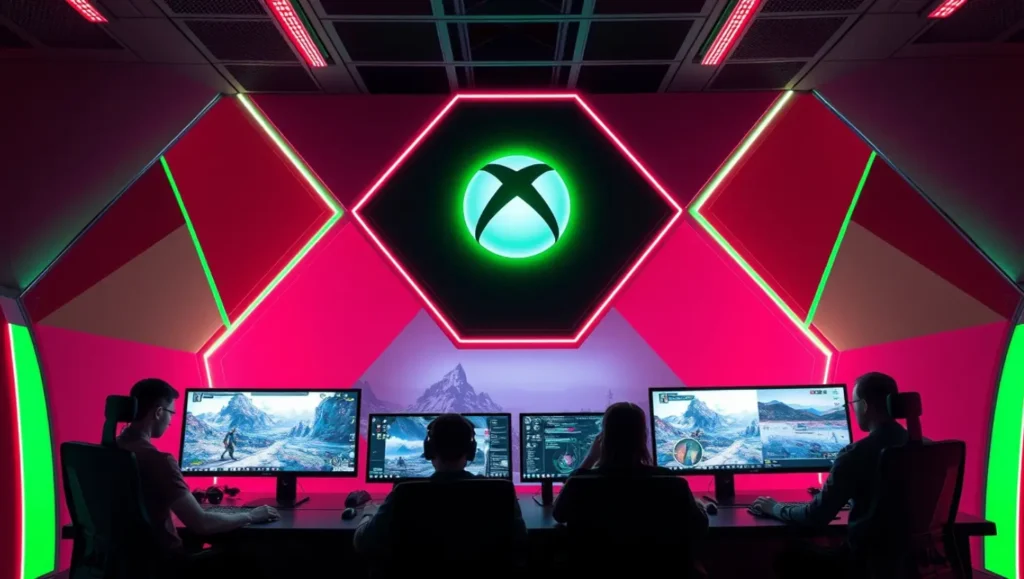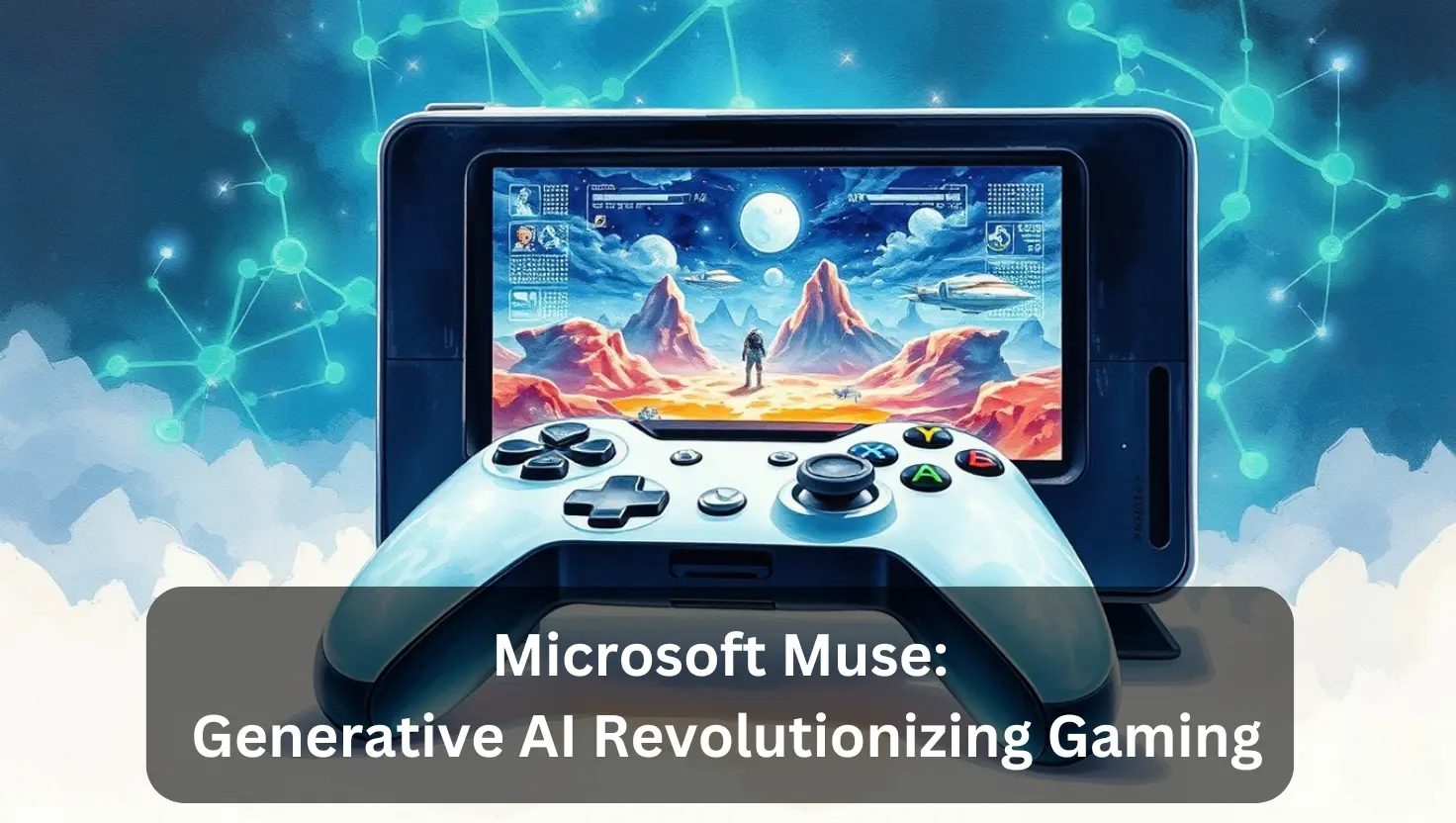Artificial intelligence is transforming industries, and gaming is no exception. Microsoft Muse, a cutting-edge generative AI model, is set to redefine how games are created and played. Developed in collaboration with Microsoft Research and Xbox Game Studios’ Ninja Theory, Muse AI introduces a groundbreaking approach to gameplay ideation, game preservation, and interactive AI-powered experiences. As the first World and Human Action Model (WHAM), Microsoft Muse demonstrates a deep understanding of 3D game environments, physics, and player interactions, opening new possibilities for game developers and players alike.
Understanding Microsoft Muse: A Generative AI Breakthrough
What is Microsoft Muse?
Microsoft Muse is a first-of-its-kind generative AI model designed to assist in gameplay ideation and game development. Unlike traditional AI used in gaming, Muse AI does not just react to predefined rules but generates consistent, diverse gameplay experiences based on visual and player input. This model represents a significant leap in generative AI models for gaming, showcasing the ability to simulate and adapt to game physics dynamically.
The Technology Behind Microsoft Muse
Muse AI was developed using extensive human gameplay data. Thanks to a collaboration with Ninja Theory, Microsoft Research trained the model on seven years of gameplay from Bleeding Edge, accumulating a staggering one billion image-action pairs. This data allows Microsoft Muse to create authentic game sequences, demonstrating persistency and adaptability in gameplay dynamics.
How Microsoft Muse Enhances Game Development
AI-Powered Game Ideation and Prototyping
Game developers constantly seek innovative ways to speed up the ideation process without compromising creativity. Microsoft Muse enables rapid prototyping by generating interactive AI-powered game experiences, reducing development time and effort. Instead of manually crafting every game element, developers can leverage Muse AI to experiment with game mechanics, visuals, and level designs in real-time.
Classic Game Preservation and Portability
The ability to preserve and improve older-generation games has to be one of the most exciting evolving prospects of AI. Phil Spencer, the CEO of Xbox Gaming, speculates that older games could be multi-platform accessible with the assistance of ‘gameplay data’ and video footage, which Muse AI can learn from. These kinds of advancements would surely change the game preservation as we know it, ensuring that gamers who grew up with these classics would always have access to them in the future.
Real-Time AI Gameplay Generation
Microsoft has showcased a real-time version of Muse AI that generates game visuals dynamically, reacting to in-game elements and player actions. While currently limited to a resolution of 300×180 pixels and a frame rate of 10fps, this experiment highlights the potential for real-time AI-driven game creation. Future advancements could push generative AI models like Muse toward generating high-resolution, interactive gaming environments.
The Role of Generative AI in Xbox’s Vision
Microsoft’s Commitment to Responsible AI
Xbox has long been at the forefront of AI and machine learning innovations. Microsoft Muse aligns with the company’s core AI principles, ensuring that generative AI enhances—rather than replaces—human creativity. Ninja Theory’s studio head, Dom Matthews, has reassured developers that AI is not intended to automate content creation but to support game designers in crafting immersive experiences more efficiently.
AI in Game Creation: A Studio-Driven Approach
Unlike a one-size-fits-all AI solution, Microsoft empowers individual Xbox studios to decide how generative AI should be integrated into their projects. Some teams may use Muse AI for prototyping and ideation, while others may leverage its potential for enhancing live game experiences. This flexible approach ensures that AI remains a tool for creativity rather than a replacement for artistic direction
Future Prospects: What’s Next for Microsoft Muse?
Muse AI in Copilot Labs and Beyond
Microsoft is actively exploring how Muse AI can contribute to game development and player experiences. Short interactive AI game experiences will soon be available on Copilot Labs, allowing players and developers to engage with AI-driven gameplay firsthand. By sharing these innovations early, Microsoft aims to gather feedback and refine its AI tools to meet real-world gaming needs.
Expanding AI Capabilities for Next-Gen Gaming
As AI technology advances, Microsoft Muse could evolve into a powerful tool for game creation, offering:
- High-resolution AI-generated gameplay visuals.
- Enhanced AI-assisted game design workflows.
- Seamless game preservation and cross-platform accessibility.
- AI-driven enhancements to existing game mechanics and player interactions.

Conclusion: Microsoft Muse and the Future of Gaming
The introduction of Microsoft Muse is a major development in the world of generative AI models for gaming. Muse AI is capable of gameplay generation, preservation of classic titles, and even game developer assistance. With Muse, the creation and experience of games are set to change dramatically. While Microsoft Xbox works on improving its AI, game designers, and players can begin to brainstorm how massive the impact of Muse will have on gaming.
Keep an eye out as Muse is showcased at events like GDC 2025, alongside Xbox’s latest AI innovations. This is now a reality with the use of Muse and the impact of generative AI is limitless.

